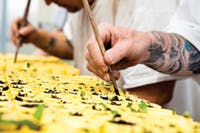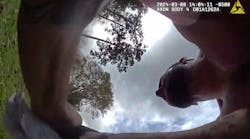A number of prisons and correctional facilities today are growing their tomatoes and eating them, too. "Green" prisons that incorporate farming and sustainability programs reap real benefits. Aside from saving money and reducing waste, they are also shown to have enormous impact on the inmates themselves -- involving them in a host of maintenance activities and providing useful job skills upon release. Some even argue the programs go a long way in reducing recidivism. Maybe your corrections facility is looking for ways to cut costs and engage its inmate population. If so, on-site gardens and organic farms are a great place to start. But why stop there? Sustainability and green training initiatives can take on many forms.
Getting green off the ground
From 1853 to 1979 the Southeast Correctional Institution (SCI) in Lancaster, Ohio had detained adjudicated juveniles, and in 1980 became an adult state correctional facility. Around the same time, the minimum to medium security prison adopted a farming operation that continues to be worked by offenders and supervised by a civilian staff. Now SCI, along with Vera Institute and the Ohio Green Prison Project (OGPP), is developing a pilot project to demonstrate that training incarcerated people to retrofit prisons with energy-efficient green technology can make facilities more cost-effective. The project will provide trainees with job skills to prepare them for careers in the burgeoning green economy, making them more likely to succeed when they return to their communities. The lower operating and energy costs are expected to result in savings for SCI and Ohio taxpayers.
During her early days at SCI, Warden Sheri Duffey recalls how she sensed a growing interest in ecology programs. "I had offenders talking to me a lot about 'let's get some green things going on'," says Duffey. "They wanted to compost, and they do a lot of gardening. With the future prospect of green jobs growing more than any other job right now, it only makes sense to me that we started training offenders for sustainability."
What Duffey hopes to accomplish in partnership with OGPP is to get green training projects off the ground. Duffey, who started her career as a corrections officer in 1988 and worked her way up through the custody ranks, has some ideas to get started. She wants to see an existing vacant building on facility grounds become a "green academy" of sorts -- a self-sustaining building in and of itself. After completing a course, trainees could apply what they've learned at the institution, and perhaps even after their release. Duffey hopes the initiative would inspire and educate members of the community, as well.
SCI is looking to hire licensed instructors, as well as bring in outside companies to volunteer, look at projects and introduce offenders to what's available on the outside. Inmates would sit in on the 8 a.m. to 5 p.m. training classes before being processed back into the main compound. Each individual must meet his or her requirements. The Green Training Academy would ideally offer an introduction to things like solar panel installation and maintenance, and weatherization.
"Most definitely, we're looking at improving our energy efficiency. And we're looking to save money, as well," says Duffey.
Back to school
The National Institute of Corrections has provided SCI with some technical assistance, but Duffey says she's also been inspired by programs happening in Washington State. At the Stafford Creek Corrections Center (SCCC), just 5 miles outside of Aberdeen, Wash., immaculately cultivated gardens and greenhouses share real estate with high-volt fences and austere watchtowers. In this maximum security prison, residents bide their "hard time" sitting in on ecology lessons that one would expect to find in some of the nation's best institutes of higher learning.
The project started small. In 2008 Stafford Creek partnered with Evergreen State College to do plant restoration projects and growing forums. After some success, program staff and offenders began to buy-in. "Evergreen wanted to get a contract to see if they could get a foot in the door of the prison," recalls Washington State Department of Corrections Superintendant Pat Glebe. "They wanted to implement some ideas." Glebe introduced Evergreen staff and students with SCCC plant managers Michael Tupper and Chris Idso. One of their first joint assignments was plant restoration at an army base in Fort Lewis. "They wanted to grow prairie grass in the prairie and really couldn't find anybody to do it," recalls Glebe. "It's pretty monotonous work -- putting the little seed in the tube. And with the offender population and greenhouses we had ... it was a perfect fit."
According to Idso, the work is well-received. "We've always had a garden crew and a grounds maintenance offender crew, and it's always been one they've enjoyed being a part of, because they're outside most of the time. But this project gives them something a lot more global to put their hands on ... something that's got more meaning. That's what these guys are hungry for."
Only two to three people are paid under the contract between Washington State DOC and Evergreen College and the nature conservancy. The majority of individuals running the show are volunteers and graduate students, some of whom are working a thesis or class project. The college does a regular lecture series where a guest comes and talks about a sustainability topic, then touches base weekly to see how the project's coming along.
Treasure from trash
Composting is the current buzzword at Stafford Creek. The corrections center started separating its food waste several years ago and sent it to a separate facility that did static pile composting. Based on that arrangement, Idso says the center was able to prove it could do the same thing themselves -- and pay for it in seven to eight years. Soon after, Stafford Creek received funding to build an in-vessel composting center onsite to process food waste.
Stafford Creek facilitators find ways to incorporate dozens of sustainability practices into their everyday routine. Whether it's using old-fashioned push lawn mowers or cultivating organic gardens -- as many as they're allowed to put in -- "nine times out of 10 if you can take a process or a system and make it more sustainable, it's going to save money," says Idso, who's seen financial savings from things like re-lamping the whole facility from T8 to T5 bulbs and changing out heating units.
Specifically, SCCC has managed to save between $40,000 to $50,000 a year by eliminating 80 percent of their garbage bag usage, thanks to a new garbage sorting center. "Initially we were producing about 1,200 tons of trash annually," says Plant Manager Michael Tupper. "We've been able to reduce 800 tons (500 food and 300 trash) that we were sending to the landfill at about $167 a ton, and we reduced that to about 300 tons a year. With a $100,000 investment, we're looking at about $100,000 to $150,000 in savings annually."
In terms of recycling, Tupper adds it reduces the facility's carbon footprint as well as cuts down on what it sends to the landfill. "We don't generate a lot of money in what we recycle, but if we don't have to pay to haul it to a landfill, then we're saving money for the facilities."
Keeping with protocol
Adding more programs to prisons, especially those that give offenders more free license around facilities, may seem daunting to corrections staff. Glebe says any time a prison implements something on this scale it takes a bit of coordination. At Stafford Creek, a high-security prison with 2,000 beds and 600 staff, inmates range from having a few days left to serve to the rest of their lives. It's important, then, to address the challenges of moving offenders, maintaining supervision and having a good screening process in place.
But starting up recycling programs can benefit security, too. Says Tupper: "This has become a better facility because ... by looking at what we have in our trash we've been able to identify practices and procedures we can correct; when we see pharmaceuticals, etc., go through we can eliminate them and take a look at our process."
To learn better recycling, Idso and Tupper brought in the local state ecology department to perform a garbage sort. "We took one days' worth of garbage and they went through it with 55-gallon garbage cans and showed us how to sort, gave us tips on where we can recycle, and things like that," says Idso. He adds there will always be a group of naysayers, but by working at a small level and slowly implementing change, and then justifying it using the amount of money saved, number of items recycled, and variety of items identified and removed from the trash; pretty soon a lot of people are convinced. "It's very beneficial to our security. But on the other side, there are some things we need to pay attention to -- things we don't want our offenders involved in," says Tupper. "It goes both ways."
Looking ahead to progress
Stafford Creek Corrections Center has received quite a bit of media attention for its part in the ongoing Sustainable Prison Project. There's something about incarcerated prisoners picking fresh grown cucumbers or rehabilitating endangered frog species (a project for which neighboring Cedar Creek Corrections Center recently received a grant from the Oregon Zoo) that invites curious onlookers. In fact, it's not uncommon to find TV or news crews covering the story.
"It does get a lot of attention," says Glebe. "Offenders know they've done bad stuff; so when they can see that what they're working on is going out there in the community, and they can show people on TV or tell their family 'I'm working on this project that's getting a lot of attention', that means something to them. It's pretty significant."
Duffey agrees this type of experience is a boon for offender well being in and out of the cell. "Clean energy grew 2.5 times faster than any other job growth. That's where the jobs are coming from or where they're going to be. And it's not just going to be a minimum wage kind of job." Nor will a number of these jobs require an advanced degree. That's a far cry from the scantily paid, burger flipping options many will find upon their return to the outside.
Sustainable training programs give inmates new opportunities. With them, releasees can compete in a fiercely competitive economy. They may find they are passionate about doing good for the environment, and inspire others to feel the same.
What better way to turn over a new leaf?



